Psssttt...

Ready to find high-paying clients and build a profitable business?
Get your free copy of Win More Clients, a 20+ page eBook that shows you how to get paid more and the secret sauce you need to create a sustainable freelance business
I received an email last week that got me excited.
I mean yes, it was an exciting email, but mostly it got me excited because it meant I could share something cool with you.
Let me set the scene.
I had been sent a writing opportunity on a website I signed up to ages ago and it looked like an interesting company, so I clicked through to see what the deal was.
Turned out the brand were looking for a SaaS writer (just like me!) to write a post for them about content marketing for new start-ups.
“That’s right up my street!” I thought.
I’m not looking for new clients, but I knew I wanted to make a connection with this company. So I went over to their site, checked them out, and I got excited reading about what they do and the kinds of businesses they help.
Turns out this brand is my IDEAL client.
No, I’m not looking for new work, but I couldn’t pass up this opportunity.
Instead of emailing the generic info@ email address (which I recommend you NEVER do unless you want your email to get lost in the thousands of others), I reached out on Twitter and asked who would be the best person to get in touch with to chat about content marketing.
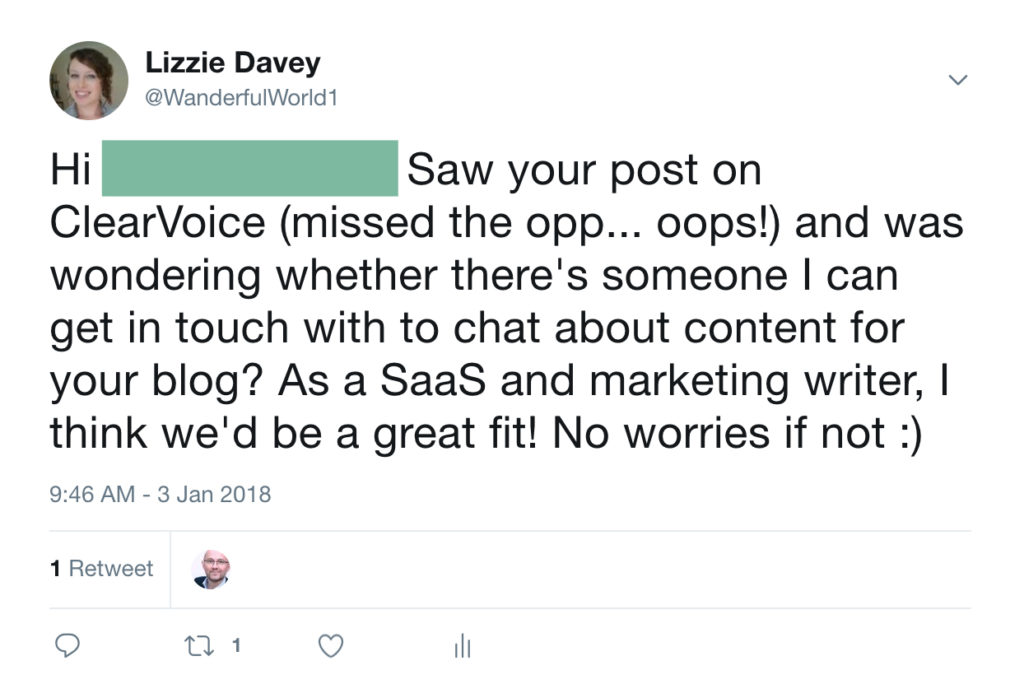
A few days passed and I hadn’t heard anything, so I thought that was that.
THEN, at the end of last week, an email landed in my inbox from the marketing manager at the company. She’d seen my Tweet and had sent details of an upcoming project she had in the pipelines.
They were looking to expand their blog and create 2-4 pieces a month, and they were looking for someone just like me to do that.

Of course, I emailed her back with a bit about how I could work with them on the project and told her that I was pretty tight for time, but I’d be happy to discuss it further.
Creating Connections is Vital If You Want Pitching Success
Moral of the story: you can find clients in all sorts of places. I could have just put in my pitch on the site where the company had advertised their job, but I knew I’d be “competing” against loads of other freelancers.
And besides, I wasn’t really looking for clients.
I just wanted to make a connection with this brand because, well, they literally fitted my ideal client persona.
My aim was to simply reach out and make a connection.
Getting work wasn’t at the forefront of my mind, but building a relationship was. And, when you pair that with the fact I reached out in a unique way on a platform I’m fairly visible on, this worked in my favour.
Second moral of the story: pitching doesn’t have to be a formulaic experience.
Your process can vary each time depending on where you found the client and what kind of relationship you want to build, but at the base of it all, you ideally want to focus on making a connection rather than selling.
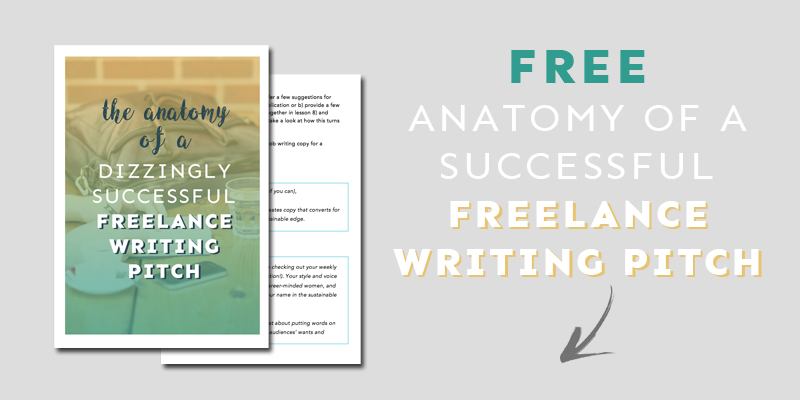
The Thing About Being a Human When You Pitch
I’ve spoken before about the number one thing freelancers forget to do when they pitch, and that’s be human.
We’re social creatures, and humans like making connections with other humans.
They like to feel listened to and a part of something, so by taking away the human element of the pitching process by sending a robotic, formulaic, unpersonalised pitch will turn prospects off quicker than you can say “please hire me”.
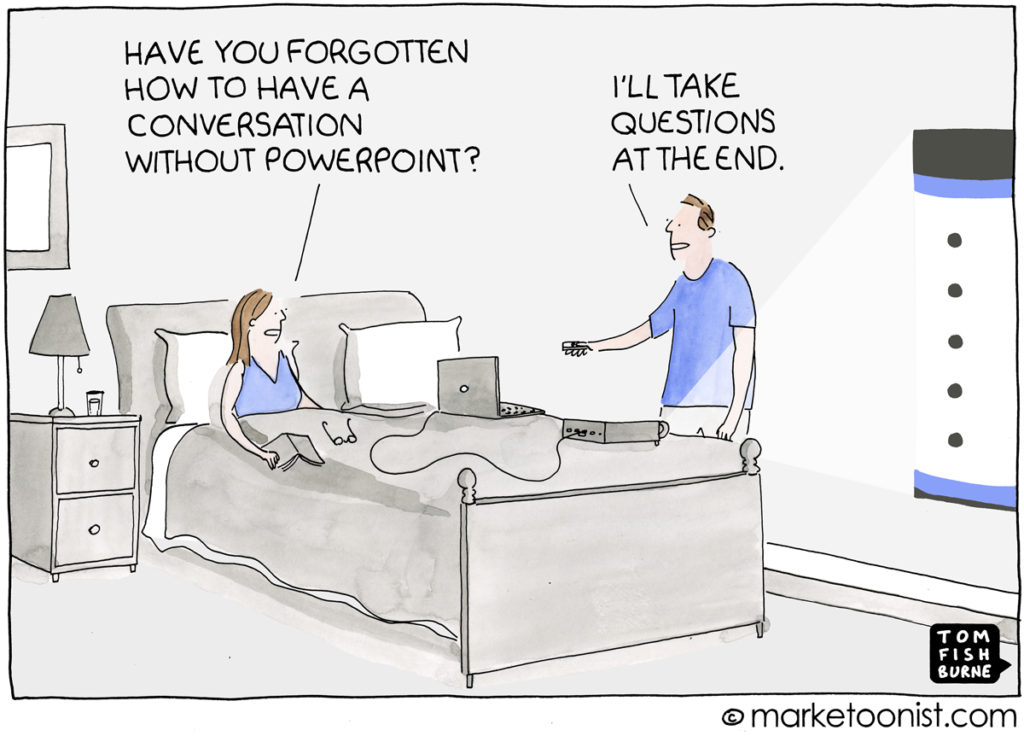
I’ve sent hundreds of pitches during my time as a freelancer.
I’ve used pretty much every single one of the cold email tips I’ve come across. I’ve sent out one hundred pitches in half an hour, and I’ve spent days crafting long pitches for companies I really wanted to work for.
But if I didn’t do one thing, neither of those methods got results.
Regardless of whether you’ve slaved away over your pitch for 100 hours or whether you’ve sent out twenty in one minute to get your numbers up, if you’re not creating that connection in the first place, you’re not going to get a response.
Why?
Because when you don’t add the human element on the end, prospects don’t care about you.
They don’t know how you can help them so they don’t care about it. They don’t know anything about you as a person, so ignoring your email is no sweat off their back.
The key is to get prospects to care. You want them to care about:
- How you can help them better their brand
- Why they should work with you over another freelancer
- Hitting that reply button and getting back to you
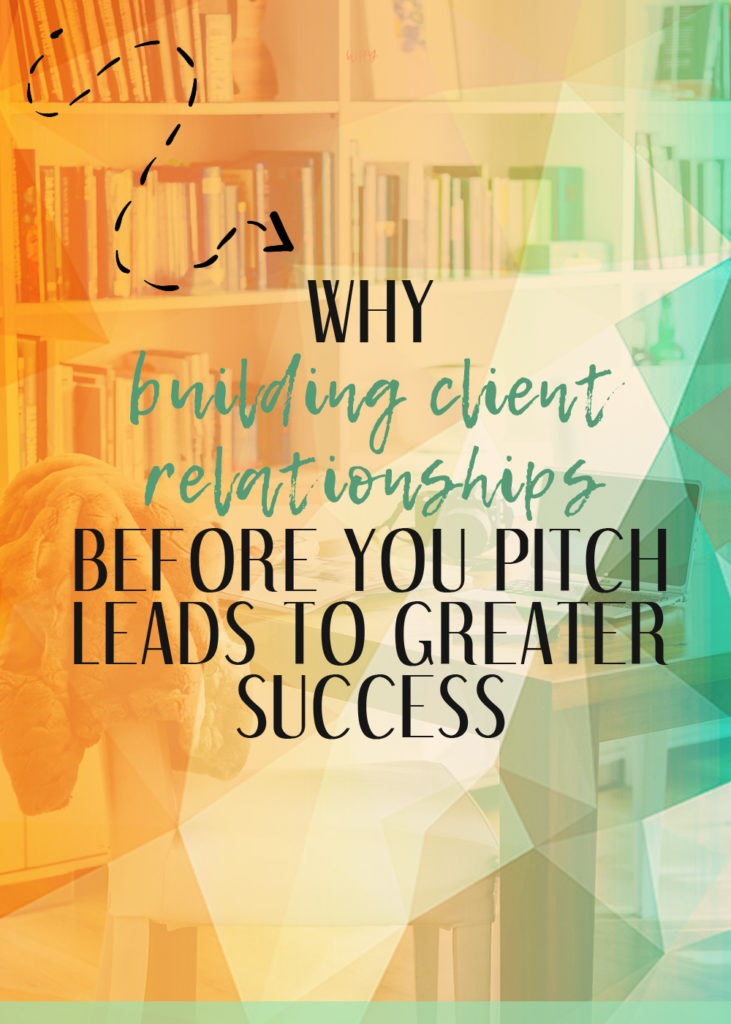
So, How Can You Build Client Relationships Before You Pitch?
It seems counterproductive, right?
Creating a relationship before the client even says yes to working with you.
Isn’t that a waste of time?
Absolutely not.
Answer me this: is it a waste of time getting to know a prospect, shooting them a pitch and them saying yes? Or is it a waste of time not getting to know prospects, sending out twenty pitches and not hearing anything back?
Sure, you’ve sent out twenty pitches, but they really don’t mean anything if you can’t convert them into clients.
Which means it’s more profitable to spend time getting to know one prospect and building a relationship with them over shooting off numerous pitches to brands who don’t know who you are and don’t give a rats ass about how you can help them.
Building Clients Relationships Doesn’t Have to Be a Struggle
You don’t have to spend hours each week nurturing your relationships. In fact, a relationship online can be built pretty quickly when you remember that most connections brands are having are with faceless, nameless people hiding behind a screen.
The more human you can be from the start, the more you will stand out, and the prospect will feel an instant connection with you.
Here’s my advice to you for building client relationships:
- Step One: Hone in on one or two prospects you’d really like to work with
- Step Two: Set aside ten minutes a day for three days
- Step Three: Find out where your prospect is hanging out online, whether that’s on Twitter, Instagram, or LinkedIn
- Step Four: Interact with them there, whether that’s by replying to a Tweet of theirs, sending a thoughtful comment on Instagram, or sharing one of their company posts on LinkedIn with your own spiel added for good measure
- Step Five: Repeat step four for three days, so you’re not just coming across as a one hit wonder to the prospect
- Step Six: By now, the prospect should know who you are as you’ve cropped up a couple of times in one week
- Step Seven: Once you’ve started a dialogue with them (as in, they’ve engaged with your engagements), you can start ramping up to the actual pitch
Building Client Relationships Should Be Your Number One Goal
As freelancers, our businesses are built on relationships with our clients.
They’re the bread and butter for us.
A good rapport with a brand can get us referrals from other brands, more work, and a great testimonial, all of which are invaluable when running a business.
So why would you even think about taking this step out of the pitching process?
The pitching process is no different to any other part of freelancing. It needs to be professional, human, and connective if you want it to be successful.
The brand that got in touch with me after I Tweeted them is a prime example of this in action.
My pitch on the writing site could have got lost amongst the masses. Instead, I stood out and was memorable by shooting a quick personable Tweet to the brand.
I don’t know what this relationship will lead to yet, or whether we’ll even be a good fit for the project, but for now I’m happy having made a connection with a company that falls under my ideal client persona.
Even if there’s no work from them right now, they might have a project crop up in a few months time, and guess who’ll be at the front of their mind?
I want to hear your stories! Have you had any experiences like this? What’s been the most unique way you’ve found a client to pitch?






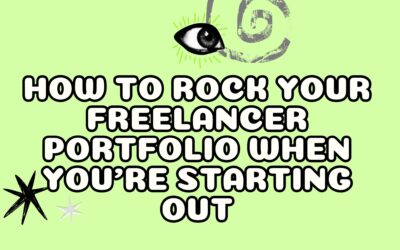
Great post Lizzie, it’s so inspiring to see that these simple techniques can actually work! I took a look at ClearVoice and I see that it’s a U.S. based company. I’m curious to know, as a UK freelancer, do you ever have problems targeting US companies? I have avoided replying to US job posts, mainly because I’m afraid that my writing isn’t “American” enough. But your example here gives me some hope and makes me think that maybe I shouldn’t be so afraid of US companies after all… 🙂
Hi Rachel!
I have absolutely no problem targeting US companies – in fact, a large portion of my client base are American or from overseas. There have been times where I’ve needed to edit certain British phrases and double check American spellings, but otherwise I’ve had no problems at all!
I find that the US seems to be more ahead of the times with freelancing, so there are more companies looking for self-employed help AND they’re willing to pay better. Let me know how you get on!
Hi Lizzie! Thanks for sharing with us! I’ve always wondered where all the humanity goes when online business starts. Like, everyone becomes a professional robot and they forgot that at the other end is a simple person like them. When you reach out in a cold manner like an automated machine, of course, the response will be similar. Maybe that’s what some people are looking for, but for long-term business, you need to add a personal touch to it. You need to stand out from the rest. And that’s what most freelancers forget. It’s just not how things really work for the best clients. Thanks again for this inspiring post!
So true, Stefan – and I love what you say about receiving a similar response to how you reach out! Thanks for stopping by and reading!